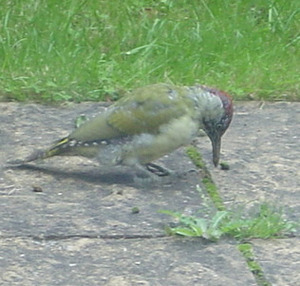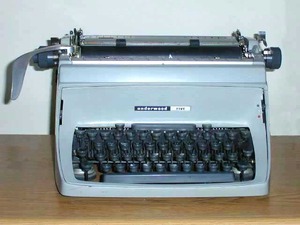 In the late 70's, a study carried out by Philip May, Joaquin Fuster, Jochen Haber and Ada Hirschman, using high-speed photography (capable of taking 2000 frames a second), revealed that the impact deceleration, when a woodpecker's beak travelling at 7 metres per second slams into a tree trunk, can exceed one thousand times the force of gravity (1200g).
In the late 70's, a study carried out by Philip May, Joaquin Fuster, Jochen Haber and Ada Hirschman, using high-speed photography (capable of taking 2000 frames a second), revealed that the impact deceleration, when a woodpecker's beak travelling at 7 metres per second slams into a tree trunk, can exceed one thousand times the force of gravity (1200g).With repeated trauma of this magnitude it's surprising that the bird's head remains attached to its body, never mind the risk of developing a severe headache, concussion or even brain damage. So why don’t they? Indeed, when other small birds accidentally fly into windows they often tumble to the ground and appear to be "knocked out" for a while before picking themselves up and fluttering off; so why should woodpeckers be any different?
The answer is that evolution has equipped them with a number of adaptations that make repeatedly banging your head against a hard surface 20 times per second slightly more tolerable.
 Firstly, woodpeckers have relatively small brains which, in contrast to a human, are packed fairly tightly inside their skull cavity. This prevents the excessive movement of the brain inside the skull, which causes so-called 'contre-coup' injuries in humans. These occur when the brain bashes into the skull following a knock on the head. In other words the head stops, but the brain keeps on moving momentarily afterwards.
Firstly, woodpeckers have relatively small brains which, in contrast to a human, are packed fairly tightly inside their skull cavity. This prevents the excessive movement of the brain inside the skull, which causes so-called 'contre-coup' injuries in humans. These occur when the brain bashes into the skull following a knock on the head. In other words the head stops, but the brain keeps on moving momentarily afterwards.
Secondly, unlike a human brain the surface of which is thrown into ridges and folds known as gyri to enable more grey matter to be packed in, the woodpecker’s brain has a smooth surface and, through its small size, a high surface area to weight ratio. This means that the impact force is spread over a much larger area, relatively speaking, compared with a human. Again, this minimises the applied trauma. The bird’s brain is also bathed in relatively little cerebrospinal fluid, which also helps to reduce the transmission of the shock waves to the brain surface.
Finally, and possibly most importantly, the woodpecker also makes sure that he minimises any side to side movement of his head, and this is where May and his colleague’s fast film footage comes in.
 The team found a tame acorn woodpecker, which could be encouraged to perform for their camera by bashing out a few words on an old typewriter. They watched as the bird first took aim and delivered a number of "test taps" before unleashing a salvo of strikes, but always in a dead straight line.
The team found a tame acorn woodpecker, which could be encouraged to perform for their camera by bashing out a few words on an old typewriter. They watched as the bird first took aim and delivered a number of "test taps" before unleashing a salvo of strikes, but always in a dead straight line.
This approach is crucial because it avoids placing rotational or sheering stresses on the nerve fibres in the brain. Humans involved in car and motorcycle accidents frequently develop the symptoms of 'diffuse axonal injury' (DAI) where sudden deceleration coupled with rotation literally twists the different parts of the brain off each other like a lid coming off a jar. By hammering in a dead straight line woody woodpecker avoids giving himself DAI, further minimising the risk of brain damage.
An unresolved issue however, is that the researchers noted from their photographs that their study subject also took the precaution of closing his eyes just before each strike. But whether this was to keep wood chips out, or the eyeballs in, is anyone’s guess!
Original references:
- May et al., Arch Neurol 1979 Jun; 36(6): 370-3
- May et al., Lancet 1976 Feb 28;1(7957):454-5
Chris Smith
No comments:
Post a Comment